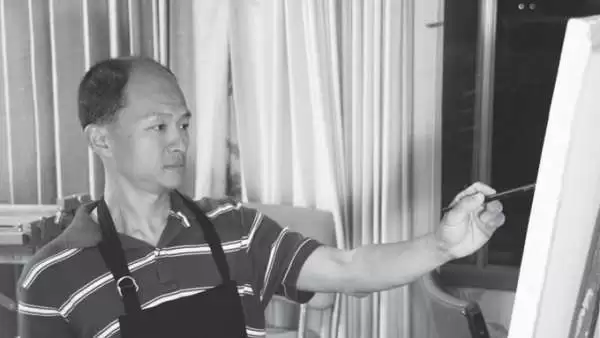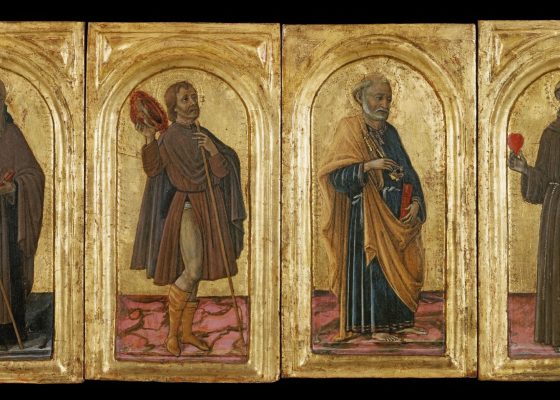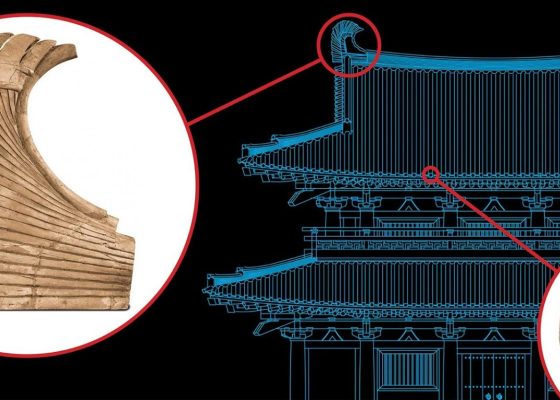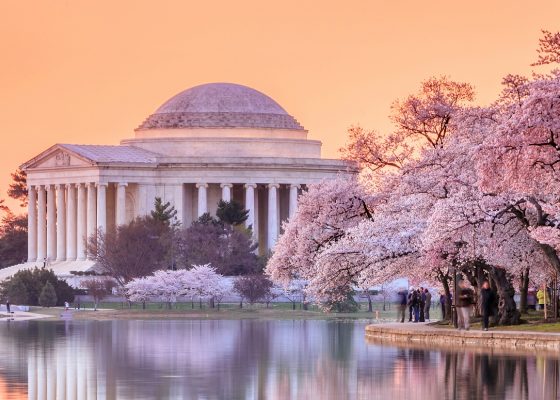
By Lillian Zheng
Liu Ren said, “A long time ago, Chinese students had already traveled abroad to learn classical fine arts in the West, but the essence of classical Western arts had not been systematically inherited in fine art academies in China. China’s fine art education was modeled on that of the Soviet Union; a systematic art education in China never came into fruition. The introduction and continued influence of modern arts further complicated the situation. The overall teaching process left students a sense of confusion.” Liu Ren was particularly concerned about the influx of various trends of modern arts. “Today, Modern art sees one school succeeding another, valuing eccentricity and even ugliness over beauty. Classical realism in paintings has been marginalized.”
In bewilderment, Liu Ren often examined classical Western masterpieces, imitating their painting styles. He said, “Renaissance art is characterized by a pursuit of ultimate perfection; ancient works of art are of great beauty. The Western society highly cherishes their traditional and classical arts.”

Apart from masterpieces of Western art, Liu Ren also drew inspiration from classical Chinese paintings which explored beauty and wisdom of life in another way. For example, in front of the mausoleum of the Emperor Taizong (626-649) there are six horses displayed, named “Six Steeds of Zhao Mausoleum” which is a relief work representing six precious war horses owned by the commemorated Tang Dynasty Emperor. Liu Ren said “Works of Tang Dynasty are of breathtaking grandeur, quite realistic, yet artistically expressive. The spirit of freehand brushwork greatly influences the development of Chinese art, whose essence lies in the expression of artistic bearing.”
Liu thinks extremist realism runs the risk of ending up superficial instead of revealing the wisdom beneath the surface. He considers classical Chinese art a way to compensate for the limitations of Western art. “Western paintings, with strict painting skills, put emphasis on reality, while Eastern paintings tend to emphasize artistic conception and the aim to express one’s spirit through works of art. Traditional Chinese culture pays close attention to the course of the Mean and balance. Though traditional Western art is great, a complete revival of Western art does not necessarily fit our modern society. Thus, we can turn to Eastern wisdom of balance to find the right viewpoint to elevate genuine art and human culture.”
Through ceaseless imitation and exploration of classical art of East and West, Liu Ren keeps enriching his own artistic taste and expression.
Painting and Cultivation
How can one appreciate and learn classical art? How can one even inherit and develop it in our modern society? For Liu Ren, the answer lies within the soul of life. “Modern artistic communities pursue immediate material results; everyone longs for overnight success. Some have real passion for painting and devote their life to it, whereas others consider painting an approach and a path to a successful spiritual life. If an artist forgets essence in art and fails to reach a certain level of personal cultivation, temporary success is far away from real achievement.”
As a teacher, Liu Ren talked about the benefits of painting practice. “To begin with, painting is a way to train students to become calm, since one can truly understand philosophy and art only when one is in a state of serenity. After practicing for a period of time, an artist can learn to be calm and is then able to take a clearer look at an object. This kind of training can be applied to other aspects of a painter’s life. For instance, it will help him to listen more attentively, which in turn will help upgrade his personal cultivation.”
Indeed, the inner aesthetic view of an artist is closely associated with the level of his mind. Western philosophers have long discussed benefits of aesthetic education. Liu Ren personally experienced these benefits. “Exposure to painting will allow one to appreciate something beautiful and can thereby guide a person towards a better, more pure soul. This way he will not commit wrongdoing, and will gradually become a kind person. Exposed to such an environment of beauty, one can be spiritually upgraded.”
With aesthetic training and personal cultivation, an artist will not merely focus on visual effects but on the deeper aspects of life and then express them via art. Liu Ren believes that only artistic works of this kind can produce lasting impact, just as the best music can echo around the rafters of a concert hall for three days, as in traditional Chinese stories.
“A creation of great excellence will attract you this way. Maybe you will feel nothing particular at first sight, but the longer you look at a work, the more interested you may feel. You enjoy the process, and at the same time the level of your thought is deepened. Besides the superficial imagery of the painting, I hope our paintings can bring more to viewers: more pleasure, and more inspiration.”
Memories of Tibet, A Tale of the Soul
Tibet has played a vital role in the artistic career of Liu Ren. He went to Tibet on his own in 2007 and 2008, where he experienced the modesty, honesty, and religious devotion of Tibetans. “Pilgrimage” is the most important element of Tibetan life. Many Tibetans will embark on their Holy Journey at least once in their lifetime, whatever the costs.
Recalling the time, Liu Ren sighed, “Most of the pilgrims I met were walking totally alone, along the road. Yet the old woman in the painting does not seem to suffer from loneliness; the look in her eyes reveals neither tiredness nor fear.” Liu Ren said the most solemn and sincere ritual for pilgrims is the Tibetan kowtow. Pilgrims lie prostrate, with their head, arms and knees down on the ground as a sign of worship. They then slowly move one step forward, followed by another kowtow. Many pilgrims will spend at least two years on the Holy Journey, carrying minimum belongings and living mostly on begging. Their firm religious belief brings them inner peace, kindness, mutual friendship and trust. Once when lost on his trip, Liu Ren was invited home by a Tibetan, who was stranger to him, to stay at his place for the night. This was a common practice in Tibet.
Chant
Many of the paintings by Liu Ren center on Tibetan themes. In Tibet, young and old alike have a prayer wheel in their hands. Spinning the prayer wheel is seen as a substitute for orally reciting the prayers and as a way to pray for well-being and spiritual purity in next life. From the spinning wheels Liu Ren draws his inspiration for his painting “Chant.” The old woman in the painting is spinning the prayer wheel in her hand, with a serene expression. With her inner faith and spiritual pursuit, she appears optimistic; not swayed by her surroundings. The painting is set in sacred Tibetan murals, adding to an atmosphere of beauty and peacefulness.
Softening Sheepskin
Tibetans are well-known for their talent in singing, dance and passion for life. The painting “Softening Sheepskin” by Liu Ren depicts a typical daily scene in Tibet. Sitting outside the house gate is a young girl busy softening sheepskin. The girl’s splendid costume and accessories reflect Tibetan passion for life. A Tibetan khata, a most precious gift for guests, is swinging in the breeze, against the ornate gate. Though most Tibetans are not rich, they keep their houses tidy, wear colorful costumes and accessories, and live every day to the fullest. Liu Ren has the wish that this painting could inspire everyone to enjoy every day to the full.
Religious devotion, purity and kindness of Tibetans are preserved in the paintings and memories of Liu Ren. Tibet reminds him of a retreat from the turmoil in the world. By contrast, many temples in Mainland China have been commercialized and thereby lost their essence.
An Explorer of Art
“I have always believed ancient aesthetics are far better than modern ones,” Liu Ren commented. “Modern people are enjoying material advancement, while their aesthetics and spirits are decaying; their perception of the outer world is deteriorating.”
Liu Ren even quoted from Buddhist scripts to refer to modern days as “The Last Period of the Dharma,” when human morality is escalating downward. Disappointed at modern society, Liu Ren has instead been fascinated with the ancient society. “I hope to aesthetically trace the lifestyle of ancients, in an effort to learn from their lifestyle and to contribute to an artistic renaissance.”
Now residing in the U.S., Liu Ren has better opportunities to learn Western and Eastern classical arts, and to combine the advantages of both traditions. “I still hope to make more time for artistic compositions. I am trying to better understand American society and culture, in an attempt to blend American and Chinese cultures and to create works of my own style.”
Like a pilgrim on his holy journey, Liu Ren has been travelling his own path in artistic exploration, from one shore to another.
Interview : Lillian Zheng
Translation : Rose Wang
Photo : New San Cai








Cancel anytime


Using our website
You may use the The Middle Land website subject to the Terms and Conditions set out on this page. Visit this page regularly to check the latest Terms and Conditions. Access and use of this site constitutes your acceptance of the Terms and Conditions in-force at the time of use.
Intellectual property
Names, images and logos displayed on this site that identify The Middle Land are the intellectual property of New San Cai Inc. Copying any of this material is not permitted without prior written approval from the owner of the relevant intellectual property rights.
Requests for such approval should be directed to the competition committee.
Please provide details of your intended use of the relevant material and include your contact details including name, address, telephone number, fax number and email.
Linking policy
You do not have to ask permission to link directly to pages hosted on this website. However, we do not permit our pages to be loaded directly into frames on your website. Our pages must load into the user’s entire window.
The Middle Land is not responsible for the contents or reliability of any site to which it is hyperlinked and does not necessarily endorse the views expressed within them. Linking to or from this site should not be taken as endorsement of any kind. We cannot guarantee that these links will work all the time and have no control over the availability of the linked pages.
Submissions
All information, data, text, graphics or any other materials whatsoever uploaded or transmitted by you is your sole responsibility. This means that you are entirely responsible for all content you upload, post, email or otherwise transmit to the The Middle Land website.
Virus protection
We make every effort to check and test material at all stages of production. It is always recommended to run an anti-virus program on all material downloaded from the Internet. We cannot accept any responsibility for any loss, disruption or damage to your data or computer system, which may occur while using material derived from this website.
Disclaimer
The website is provided ‘as is’, without any representation or endorsement made, and without warranty of any kind whether express or implied.
Your use of any information or materials on this website is entirely at your own risk, for which we shall not be liable. It is your responsibility to ensure any products, services or information available through this website meet your specific requirements.
We do not warrant the operation of this site will be uninterrupted or error free, that defects will be corrected, or that this site or the server that makes it available are free of viruses or represent the full functionality, accuracy and reliability of the materials. In no event will we be liable for any loss or damage including, without limitation, loss of profits, indirect or consequential loss or damage, or any loss or damages whatsoever arising from the use, or loss of data, arising out of – or in connection with – the use of this website.
Last Updated: September 11, 2024
New San Cai Inc. (hereinafter “The Middle Land,” “we,” “us,” or “our”) owns and operates www.themiddleland.com, its affiliated websites and applications (our “Sites”), and provides related products, services, newsletters, and other offerings (together with the Sites, our “Services”) to art lovers and visitors around the world.
This Privacy Policy (the “Policy”) is intended to provide you with information on how we collect, use, and share your personal data. We process personal data from visitors of our Sites, users of our Services, readers or bloggers (collectively, “you” or “your”). Personal data is any information about you. This Policy also describes your choices regarding use, access, and correction of your personal information.
If after reading this Policy you have additional questions or would like further information, please email at middleland@protonmail.com.
PERSONAL DATA WE COLLECT AND HOW WE USE IT
We collect and process personal data only for lawful reasons, such as our legitimate business interests, your consent, or to fulfill our legal or contractual obligations.
Information You Provide to Us
Most of the information Join Talents collects is provided by you voluntarily while using our Services. We do not request highly sensitive data, such as health or medical information, racial or ethnic origin, political opinions, religious or philosophical beliefs, trade union membership, etc. and we ask that you refrain from sending us any such information.
Here are the types of personal data that you voluntarily provide to us:
As a registered users or customers, you may ask us to review or retrieve emails sent to your business. We will access these emails to provide these services for you.
We use the personal data you provide to us for the following business purposes:
Information Obtained from Third-Party Sources
We collect and publish biographical and other information about users, which we use to promote the articles and our bloggers who use our sites. If you provide personal information about others, or if others give us your information, we will only use that information for the specific reason for which it was provided.
Information We Collect by Automated Means
Log Files
The site uses your IP address to help diagnose server problems, and to administer our website. We use your IP addresses to analyze trends and gather broad demographic information for aggregate use.
Every time you access our Site, some data is temporarily stored and processed in a log file, such as your IP addresses, the browser types, the operating systems, the recalled page, or the date and time of the recall. This data is only evaluated for statistical purposes, such as to help us diagnose problems with our servers, to administer our sites, or to improve our Services.
Do Not Track
Your browser or device may include “Do Not Track” functionality. Our information collection and disclosure practices, and the choices that we provide to customers, will continue to operate as described in this Privacy Policy, whether or not a “Do Not Track” signal is received.
HOW WE SHARE YOUR INFORMATION
We may share your personal data with third parties only in the ways that are described in this Privacy Policy. We do not sell, rent, or lease your personal data to third parties, and We does not transfer your personal data to third parties for their direct marketing purposes.
We may share your personal data with third parties as follows:
There may be other instances where we share your personal data with third parties based on your consent.
HOW WE STORE AND SECURE YOUR INFORMATION
We retain your information for as long as your account is active or as needed to provide you Services. If you wish to cancel your account, please contact us middleland@protonmail.com. We will retain and use your personal data as necessary to comply with legal obligations, resolve disputes, and enforce our agreements.
All you and our data are stored in the server in the United States, we do not sales or transfer your personal data to the third party. All information you provide is stored on a secure server, and we generally accepted industry standards to protect the personal data we process both during transmission and once received.
YOUR RIGHTS/OPT OUT
You may correct, update, amend, delete/remove, or deactivate your account and personal data by making the change on your Blog on www.themiddleland.com or by emailing middleland@protonmail.com. We will respond to your request within a reasonable timeframe.
You may choose to stop receiving Join Talents newsletters or marketing emails at any time by following the unsubscribe instructions included in those communications, or you can email us at middleland@protonmail.com
LINKS TO OTHER WEBSITES
The Middle Land include links to other websites whose privacy practices may differ from that of ours. If you submit personal data to any of those sites, your information is governed by their privacy statements. We encourage you to carefully read the Privacy Policy of any website you visit.
NOTE TO PARENTS OR GUARDIANS
Our Services are not intended for use by children, and we do not knowingly or intentionally solicit data from or market to children under the age of 18. We reserve the right to delete the child’s information and the child’s registration on the Sites.
PRIVACY POLICY CHANGES
We may update this Privacy Policy to reflect changes to our personal data processing practices. If any material changes are made, we will notify you on the Sites prior to the change becoming effective. You are encouraged to periodically review this Policy.
HOW TO CONTACT US
If you have any questions about our Privacy Policy, please email middleland@protonmail.com
The Michelin brothers created the guide, which included information like maps, car mechanics listings, hotels and petrol stations across France to spur demand.
The guide began to award stars to fine dining restaurants in 1926.
At first, they offered just one star, the concept was expanded in 1931 to include one, two and three stars. One star establishments represent a “very good restaurant in its category”. Two honour “excellent cooking, worth a detour” and three reward “exceptional cuisine, worth a
Thank you for your participation,
please Log in or Sign up to Vote

123Sign in to your account